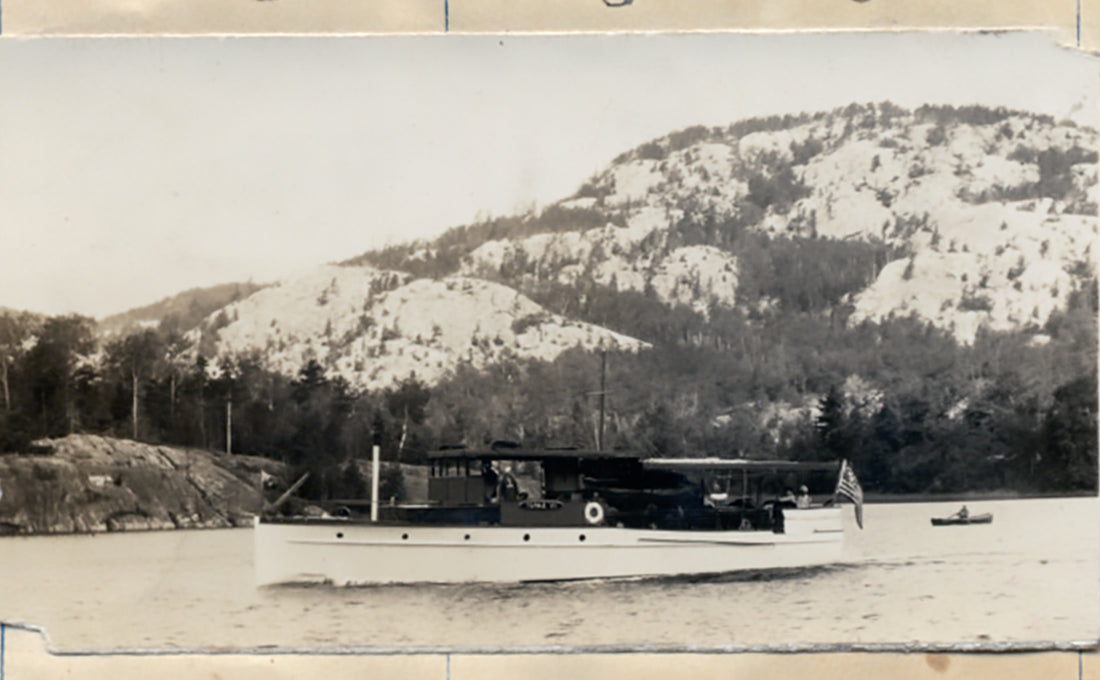Paul H. Hoeft's yacht 'Topaz VII' cruised to Baie Fine and The Pool many times visiting the Spreadboroughs and signing the Register.
Here we have photos of 'Topaz VII' at The Pool, at Baie Fine and at Barren Islands which were affectionately known as 'Barrel Islands' during American Prohibition.
The August 7, 1935 entry in the Spreadborough Register has the famous duo 'Amos and Andy' on board. Amos 'n' Andy began as one of the first radio comedy series and was the most popular radio program in the United States at this time. Amos 'n' Andy were Freeman Gosden and Charles Correll.
Hoeft was a Rogers City, Michigan lumber baron and more information about him and Hoeft State park is below ( from the Free Library )
Hoeft State Park stretches along the Lake Huron shore, an hour southeast of the Mackinac Bridge. The water is a vivid blue, and the sand dunes are a rarity for this side of the state. One hundred and forty-three campsites dot the heavily wooded acreage.
But these 301 acres were not always a public park; they once belonged to Paul H. Hoeft, a Rogers City lumber baron who, with his father, operated a timber company, a general store, and a successful shipping business.
Wealthy beyond his needs, Hoeft donated a portion of his land holdings to the state in 1922. It became one of Michigan's first state parks.
In all, 22 parks (and one recreation area) have been named after people who have contributed to the betterment of the state in a variety of ways.
LUMBER BARONS
The largest number of parks pay homage to lumber barons. There is both an irony and a logic in this situation.
The irony lies in the fact that, in the late 1800s, lumber barons clear-cut most of the state, especially in the north. Naming parks after people who removed large stands of trees doesn't seem fitting. After all, parks are where we preserve trees.
These men, though, did more than just harvest timber. They founded towns and developed infrastructure. They served as mayors--or, in Hoeft's case, as a township assessor. And, more to the point, they donated land.
Michigan had almost no money to acquire lands in the 1910s and 1920s, according to Lisa Gamero, cultural resource analyst for the Department of Natural Resources (DNR), and the donations from lumber barons were needed. "[Otherwise,] we wouldn't have had some of our prettier parks," she says.
In addition to Hoeft, parks that commemorate lumber barons include Hartwick Pines, Mears, Mitchell, Sterling, Wilson, and Wells.
Thanks for the great photos Christina Jones.





